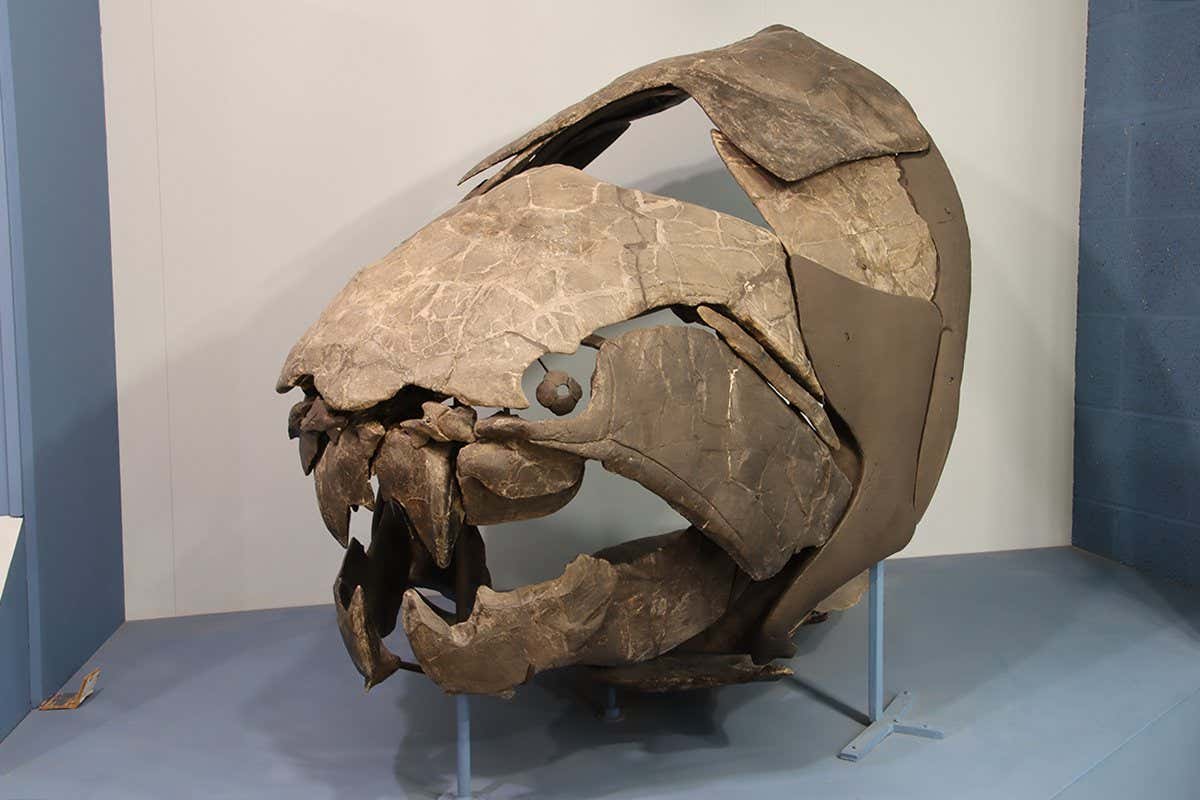Giant Prehistoric Fish? Not So Big: Re-evaluating the Size of Leedsichthys
For decades, Leedsichthys problematicus, a giant filter-feeding fish from the Jurassic period, has been depicted as a colossal creature, rivaling even the largest whales. Popular portrayals often showcase it as a behemoth of the seas, a true giant of the prehistoric world. But a recent re-evaluation of fossil evidence challenges this long-held belief, suggesting a significantly smaller size than previously thought.
This reassessment isn't a simple downsizing; it involves a fundamental shift in our understanding of this iconic prehistoric fish. The implications are far-reaching, affecting our understanding of Jurassic marine ecosystems and the evolutionary pressures that shaped these ancient giants.
The Myth of the Megadon: Debunking Oversized Estimates
The exaggerated size of Leedsichthys stemmed from earlier interpretations of fragmented fossil remains. Scientists struggled to piece together the incomplete skeletal structure, leading to estimations that placed the fish at lengths exceeding 30 meters – longer than a blue whale! These colossal figures captivated the public imagination, solidifying *Leedsichthys'*s image as an undisputed marine megafauna.
However, recent studies have meticulously analyzed newly discovered fossils and re-examined previously collected specimens using advanced techniques. This rigorous approach has unveiled a more nuanced and arguably more accurate picture of *Leedsichthys'*s true size.
A More Realistic Size: Scaling Down the Giant
The revised estimates, based on a more complete understanding of the skeletal structure and growth patterns, place Leedsichthys in a considerably smaller, though still impressive, size range. Current research suggests that the largest individuals likely reached lengths of approximately 16 meters – still large, but significantly smaller than previously believed. This is roughly comparable to the size of a modern-day basking shark.
Implications for Jurassic Ecosystems
This downsizing of Leedsichthys has important ramifications for our understanding of Jurassic marine ecosystems. A smaller Leedsichthys would have occupied a different ecological niche, potentially impacting the distribution and abundance of other marine organisms. Further research is needed to fully explore these ecological implications and reassess the roles of other marine giants within the Jurassic period.
The Ongoing Search for Answers: Further Research and Future Discoveries
The reassessment of *Leedsichthys'*s size is a testament to the ever-evolving nature of paleontological research. New fossil discoveries and advancements in analytical techniques continue to refine our knowledge of prehistoric life. While the mystery surrounding Leedsichthys may not be entirely solved, this revision provides a clearer, more accurate picture of this fascinating Jurassic giant.
Keywords: Leedsichthys, Prehistoric Fish, Jurassic Period, Paleontology, Fossil, Marine Ecosystem, Giant Fish, Reassessment, Size Estimation
Related Articles:
- [Link to article about other Jurassic marine life]
- [Link to article about fossil discovery techniques]
- [Link to article about the size of other prehistoric creatures]
Call to Action: Stay tuned for further updates on Leedsichthys research and explore the fascinating world of paleontology with us! What other prehistoric creatures do you want to learn more about? Let us know in the comments below!

